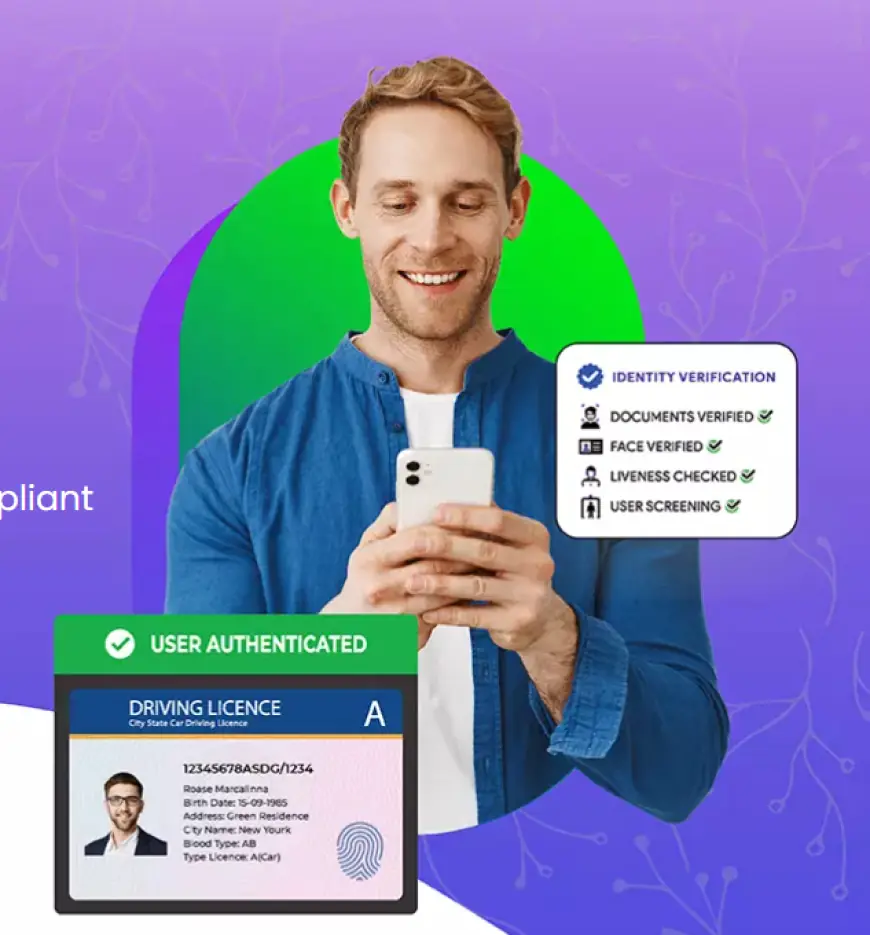Identity Verification Services and Facial Biometric Verification: Enhancing Security in the Digital Age
As the technology continues to evolve, companies that adopt biometric verification will stay ahead in the ever-changing digital landscape

In today’s digital world, businesses and organizations are increasingly turning to identity verification services to ensure security, compliance, and fraud prevention. Among the various methods available, facial biometric verification has emerged as a highly reliable and efficient solution for authenticating individuals. This blog explores the significance of identity verification services and how facial biometric verification is transforming online security.
What Are Identity Verification Services?
Identity verification services are solutions that help organizations confirm the authenticity of an individual’s identity. These services use various methods such as document verification, biometric authentication, and database cross-referencing to validate an individual’s credentials. Industries like banking, healthcare, e-commerce, and fintech heavily rely on identity verification to prevent fraud and comply with regulatory standards.
Key components of identity verification services include:
-
Document Verification – Uses AI-driven technology to analyze government-issued IDs, passports, and other official documents.
-
Biometric Verification – Employs face, fingerprint, or voice recognition to authenticate users.
-
Liveness Detection – Prevents spoofing attacks by ensuring the presence of a real, live user.
-
AML and KYC Compliance – Ensures businesses adhere to Anti-Money Laundering (AML) and Know Your Customer (KYC) regulations.
The Role of Facial Biometric Verification
Facial biometric verification is an advanced form of identity authentication that matches a user’s face against a stored image or document. This process leverages artificial intelligence and deep learning algorithms to provide high accuracy and security.
How Facial Biometric Verification Works
-
Image Capture – The system captures the user’s face via a camera.
-
Feature Extraction – Key facial features, such as the distance between the eyes, nose shape, and jawline, are analyzed.
-
Comparison & Matching – The extracted features are compared with stored data to determine a match.
-
Liveness Detection – Advanced techniques, such as blinking or head movement detection, ensure that the verification process isn’t fooled by a static image.
-
Authentication Approval – If the system confirms a match, access is granted.
Benefits of Facial Biometric Verification
1. Enhanced Security
Facial recognition technology provides an additional layer of security compared to traditional methods such as passwords or PINs. Since facial features are unique, the risk of identity theft is significantly reduced.
2. Faster Authentication
Unlike manual verification processes that take time, facial biometric verification is quick and efficient. This is particularly useful for industries like finance and healthcare, where seamless authentication is crucial.
3. Fraud Prevention
By leveraging AI-powered liveness detection and anti-spoofing techniques, facial biometric verification prevents unauthorized access and fraudulent transactions.
4. Regulatory Compliance
Many industries are required to comply with strict regulatory standards. Facial biometric verification helps businesses meet KYC and AML requirements, reducing legal risks.
The Future of Identity Verification and Facial Biometrics
As digital transformation continues, the adoption of biometric verification is expected to grow. Advancements in AI, deep learning, and blockchain technology will further enhance the accuracy and security of identity verification services.
Businesses looking to protect customer data, prevent fraud, and improve user experience should consider integrating facial biometric verification into their identity verification processes. By leveraging this technology, organizations can ensure secure, seamless, and trustworthy digital interactions.
Conclusion Identity verification services, especially facial biometric verification, are revolutionizing the way businesses authenticate users. With robust security features, rapid authentication, and compliance benefits, this technology is becoming an essential tool for fraud prevention and secure digital interactions.

 Michael george
Michael george 










